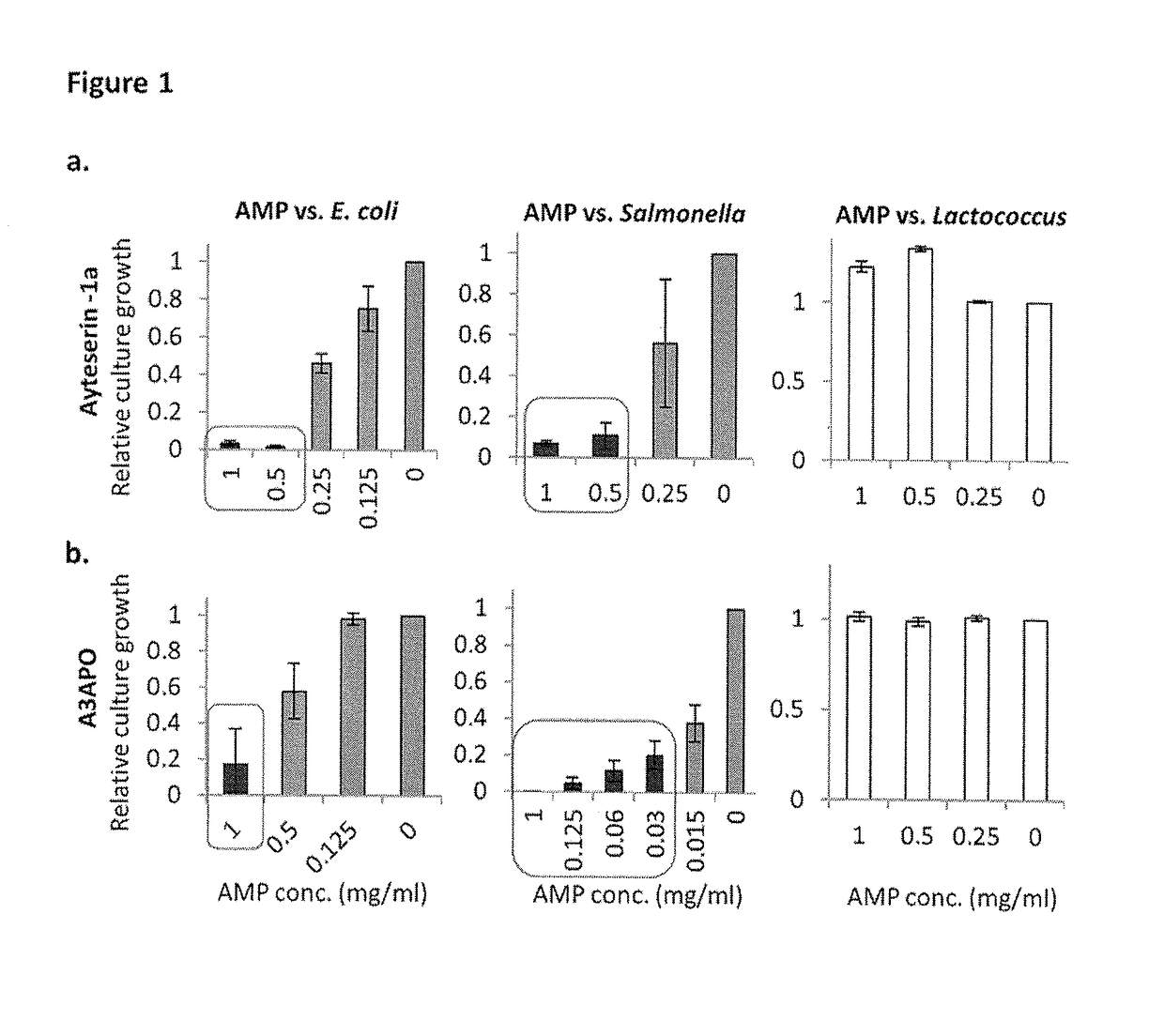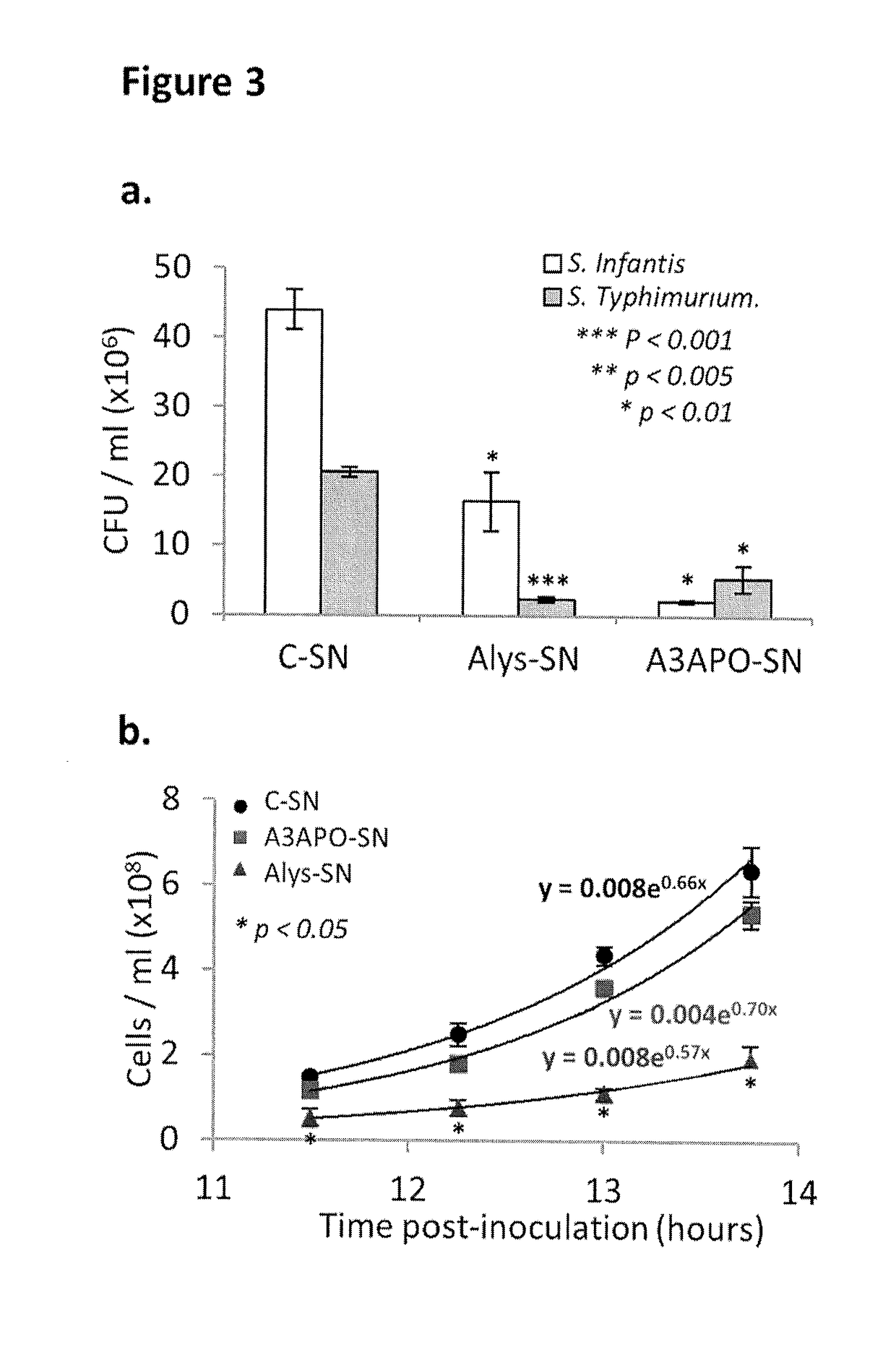Methods for making and using antimicrobial peptides
a technology of antimicrobial peptides and peptides, which is applied in the direction of peptides, peptide/protein ingredients, instruments, etc., can solve the problems of serious and life-threatening hospital borne infections, inability to meet the needs of patients,
- Summary
- Abstract
- Description
- Claims
- Application Information
AI Technical Summary
Benefits of technology
Problems solved by technology
Method used
Image
Examples
example 1
[0093]Presented herein are results of tests with recombinant Lactococcus lactis that produce and secrete heterologous antimicrobial peptides with activity against Gram-negative pathogenic Escherichia coli and Salmonella. In an initial screening, the activities of numerous candidate antimicrobial peptides, made by solid state synthesis, were assessed against several indicator pathogenic E. coli and Salmonella strains. Peptides A3APO and Alyteserin were selected as top performers based on high antimicrobial activity against the pathogens tested and on significantly lower antimicrobial activity against L. lactis. Expression cassettes containing the signal peptide of the protein Usp45 fused to the codon optimized sequence of mature A3APO and Alyteserin were cloned under the control of a nisin-inducible promoter nisA and transformed into L. lactis IL1403. The resulting recombinant strains were induced to express and secrete both peptides. A3APO- and Alyteserin-containing supernatants fro...
example 2
Methods
Gene Design.
[0125]Based on the AMPs nucleotide sequences obtained from NCBI we designed two different genetic fragments (ANEX 1): a synthetic polycistronic operon containing the enterocin A structural (entA) and immunity gene (entiA) (GenBank: AF240561.1), the hiracin JM79 structural (hiriJM79) and immunity gene (hiriJM79) (GenBank: DQ664500.1), and the enterocin P structural (entP) and immunity gene (entiP) (GenBank: AF005726.1); and the gene from endolysin Lys170 (lys170) (Proença et al., 2012, Microb Drug Resist. 18: 322-332). In bacteria, most proteins are secreted via the general secretory pathway or Sec system, being synthesized as precursors containing the mature protein and N-terminal signal peptides (SP) (Borrero et al., 2011, J Biotechnol. 156:76-86). Both EntP and HirJM79 are produced with a signal peptide, but EntA is naturally produced with a leader sequence (LSEntA) and needs a dedicated ABC transporter system in order to be secreted. It has been shown that the ...
PUM
| Property | Measurement | Unit |
|---|---|---|
| concentration | aaaaa | aaaaa |
| pore-size | aaaaa | aaaaa |
| volume | aaaaa | aaaaa |
Abstract
Description
Claims
Application Information
 Login to View More
Login to View More - R&D
- Intellectual Property
- Life Sciences
- Materials
- Tech Scout
- Unparalleled Data Quality
- Higher Quality Content
- 60% Fewer Hallucinations
Browse by: Latest US Patents, China's latest patents, Technical Efficacy Thesaurus, Application Domain, Technology Topic, Popular Technical Reports.
© 2025 PatSnap. All rights reserved.Legal|Privacy policy|Modern Slavery Act Transparency Statement|Sitemap|About US| Contact US: help@patsnap.com



